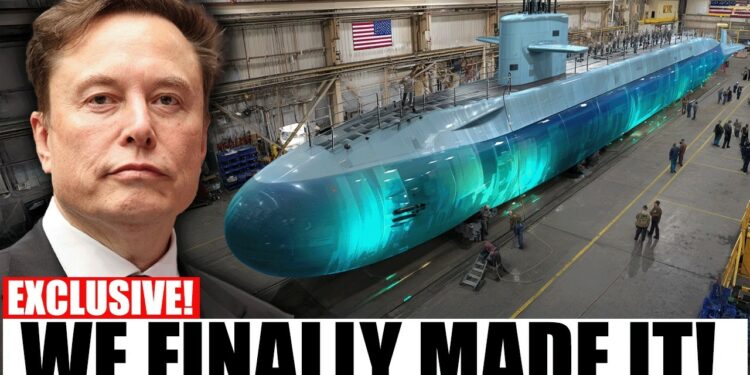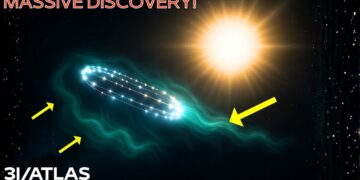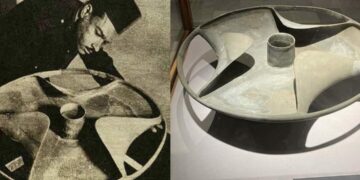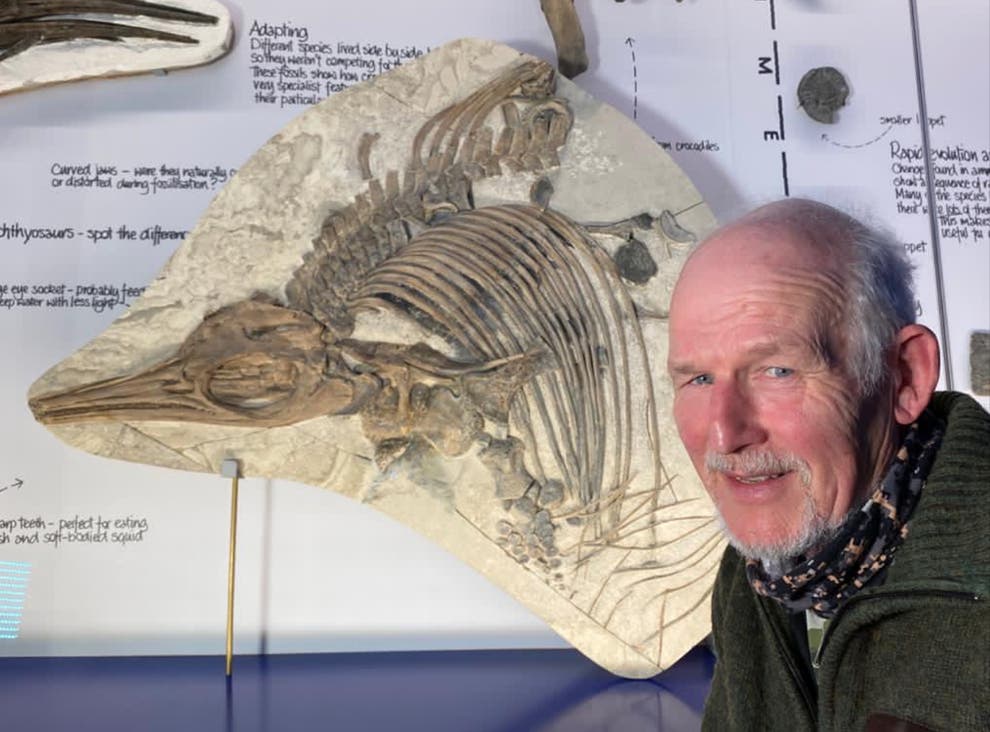Beneath the crushing pressure of the Atlantic, where light vanishes and steel could buckle, a massive entity glides in silence. It doesn’t roar or flash—it hums. This is a machine of 8 million kilograms of steel and engineering mastery, designed not to be seen or heard but to dominate the ocean’s hidden depths. Meet the USS Virginia, the first of her class, a silent hunter that revolutionized modern submarine warfare.
The Virginia-class submarines are the U.S. Navy’s most advanced fast-attack vessels. Stretching 377 feet long and 34 feet wide—longer than a skyscraper laid on its side—they displace nearly 7,800 tons of seawater when submerged, yet move with the stealth of a shadow. Capable of diving beyond 800 feet and cruising faster than 25 knots, they can unleash a barrage of torpedoes and cruise missiles powerful enough to obliterate entire fleets. Some submarines hunt, others deter; the Virginia class excels at both, all while remaining undetected.
Her story begins in the post-Cold War era of the 1990s, a time when the U.S. Navy faced a crossroads. The Soviet threat had diminished, defense budgets were shrinking, and the Seawolf class, a pinnacle of engineering, proved too expensive at $3 billion per vessel, with only three ever built. The Navy needed a leaner, smarter, and equally lethal predator. The result was the Virginia class, the future of undersea warfare.
Building such a machine demanded innovation. Early Virginia-class submarines cost around $2.8 billion each, with newer variants exceeding $4 billion. The true breakthrough, however, was in their construction. For the first time, two shipyards—Electric Boat in Groton, Connecticut, and Newport News Shipbuilding in Virginia—collaborated seamlessly. They constructed massive submarine sections independently, exchanged them like puzzle pieces, and welded them together with surgical precision. This approach was not only efficient but also sustained two industrial bases, kept workforces sharp, and doubled production to two submarines annually—a system that remains the backbone of American submarine construction today.
The USS Virginia herself came together swiftly. Contracted in 1998, her keel was laid in 1999, and by 2003, she was launched into the Atlantic. Lynda Johnson Robb, daughter of President Lyndon B. Johnson, christened her. On October 23, 2004, she was commissioned into the U.S. Navy. What made her historic wasn’t just her hardware but her design. The Virginia was the first American submarine built entirely using digital 3D models, with every pipe, cable, and valve mapped on a computer before any metal was cut. This digital precision enabled seamless upgrades for decades to come.
Her greatest innovation, however, was in her “eyes.” Traditional submarines relied on periscopes—long metal tubes extending from the control room through the hull, offering a narrow, fixed view. The Virginia class replaced these with photonics masts: telescoping camera towers equipped with high-definition daylight sensors, infrared imagers, and laser rangefinders. These beam a 360-degree view of the surface onto wall-sized displays in the control room, transforming a limited view into an IMAX-like experience. This allowed engineers to relocate the control room to a lower, wider deck, optimizing space and improving the entire layout.
At her core is the S9G nuclear reactor, designed to power the Virginia for her 30-year service life without refueling. It drives steam turbines connected to a pump-jet propulsion system, replacing traditional propellers. The result is near-silent operation—fewer cavitation bubbles, less vibration, and an almost nonexistent acoustic footprint. For a submarine, silence is not just stealth; it’s survival.
Her firepower matches her stealth. The Virginia carries four 21-inch torpedo tubes armed with Mark 48 Advanced Capability torpedoes, wire-guided weapons that hunt submarines and destroy surface ships. These torpedoes evolve through software upgrades, adapting without hardware changes—a living weapon. Beyond torpedoes, the lead ship featured 12 vertical launch tubes in her bow, each loaded with Tomahawk cruise missiles capable of striking targets 1,000 miles away with pinpoint accuracy. Later Virginia-class boats replaced these with two large payload tubes, each holding six missiles, but the original Virginia proved the concept’s flawless execution.
Her hull is coated in sound-absorbing tiles, and her machinery rests on isolation mounts to minimize vibrations. Early models featured a massive spherical sonar array in the bow, while later ones adopted the cheaper, sharper, and easier-to-maintain Large Aperture Bow array. This philosophy of continuous, modular upgrades—integrating new systems every few years instead of redesigning entire submarines—originated with the Virginia class, creating a fleet that evolves over time.
Yet, her most covert role is as a “ghost taxi.” The torpedo room can be converted into berths for a platoon of Navy SEALs, with a large lockout chamber allowing them to exit and return underwater without surfacing. She can also deploy unmanned undersea vehicles through her tubes for reconnaissance or electronic operations. In 2008, during testing, she fired three Tomahawks in one sequence—two from vertical launchers and one from a torpedo tube. The test was understated but demonstrated her unmatched ability to strike far, hide close, and vanish entirely.
Life aboard is cramped but efficient. Around 130 sailors operate a machine that combines a nuclear reactor, a weapons arsenal, and a stealth platform. Compared to older submarines, the Virginia feels almost spacious. Crews spend six months at sea, followed by six months ashore. Upon returning from deployment, there are no parades or fanfare—just quiet acknowledgment on the pier and the knowledge that, for six months, one of America’s most powerful machines roamed the depths undetected.
The Virginia’s lineage traces back to the Cold War and the legendary USS Los Angeles. At 362 feet long and 33 feet wide, the Los Angeles-class submarines were nuclear-powered predators built to counter the Soviet threat. Displacing nearly 6,900 tons submerged, they glided through the Pacific like whispers. Officially, they could exceed 25 knots and dive beyond 650 feet, though their true capabilities remain classified and likely far greater. Conceived in the early 1970s, the lead ship’s keel was laid in 1972 at Newport News, launched in 1974, and commissioned in 1976. Costing around $900 million (nearly $2 billion today), she was a technological marvel. Months after entering service, she hosted President Jimmy Carter and Admiral Hyman Rickover, symbolizing America’s underwater dominance.
Powered by an S6G reactor, the Los Angeles had unlimited range, vanishing for months and appearing where least expected. Her four 21-inch torpedo tubes fired Mark 48 torpedoes, and later variants added vertical launchers for cruise missiles, making her both a hunter and a land-attack platform. By the mid-1980s, the Los Angeles class—62 boats built over 25 years in three generations—formed the backbone of the U.S. undersea fleet. Early models featured spherical bow sonar, while later “688i” variants were quieter, tougher, and Arctic-capable. Each iteration refined the design, a philosophy the Virginia class would later perfect.
Life aboard the Los Angeles was disciplined and analog—no digital masts or touchscreens, just periscopes, dials, and teamwork. Her missions, largely classified, involved shadowing Soviet subs, gathering intelligence, and asserting silent dominance across the Mediterranean and Pacific. She broke tradition by carrying city names like Los Angeles, Boston, and Dallas, tying naval power to national pride. By 2010, the USS Los Angeles, the oldest attack submarine in the Pacific Fleet, had served over three decades. Decommissioned in 2011 at Pearl Harbor, she passed on a wartime relic—Admiral Rickover’s cribbage board—to her successors, cementing her legacy.
Dozens of Los Angeles-class submarines still patrol silently from bases like Norfolk, San Diego, Pearl Harbor, and Guam. They remind us that underwater, power is silent. From that silence emerged the Virginia class—a smarter, quieter predator, built for a world where the unseen enemy is heard long before it’s seen. In the ocean’s darkness, what you can’t hear is what kills you.
























